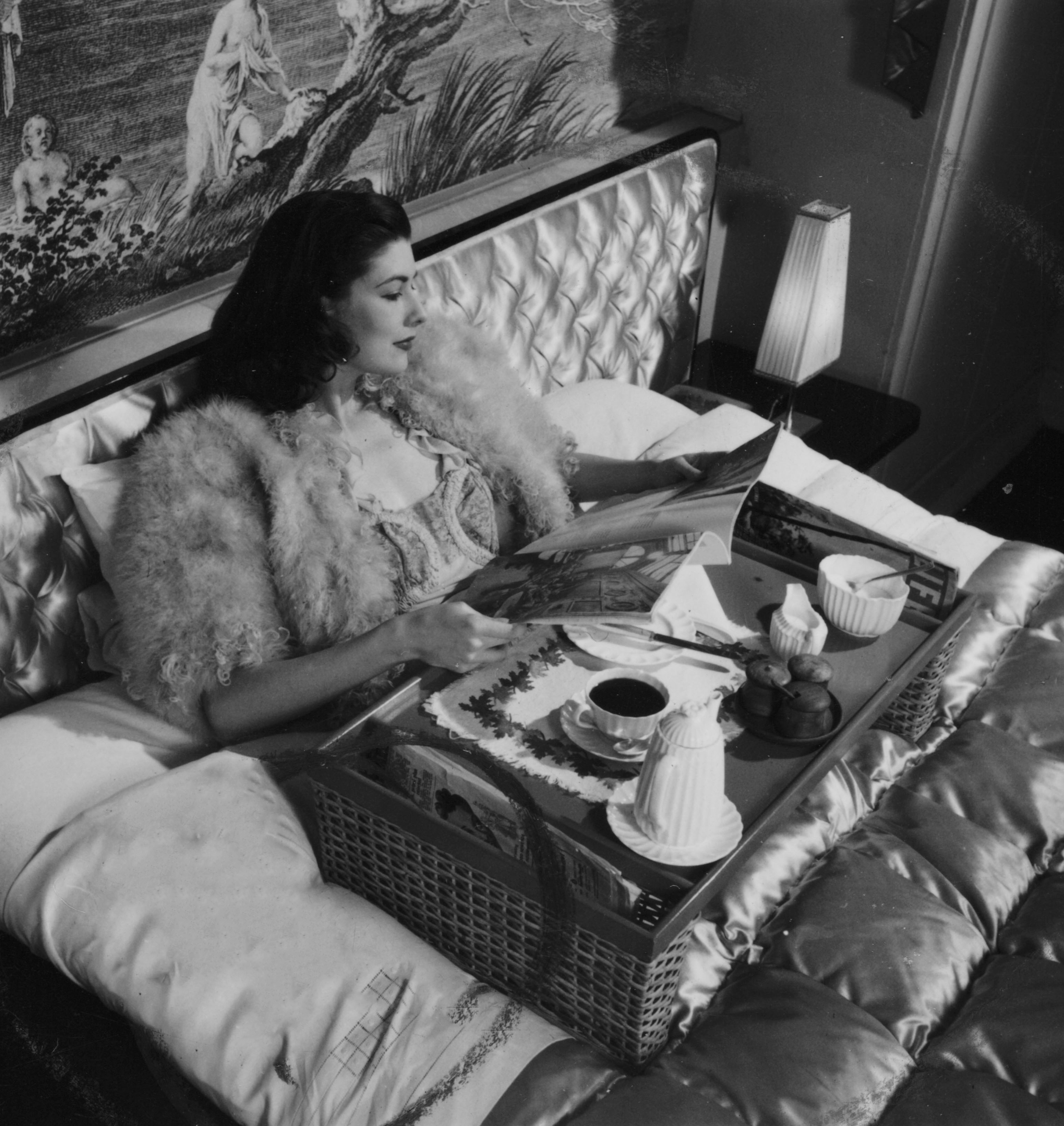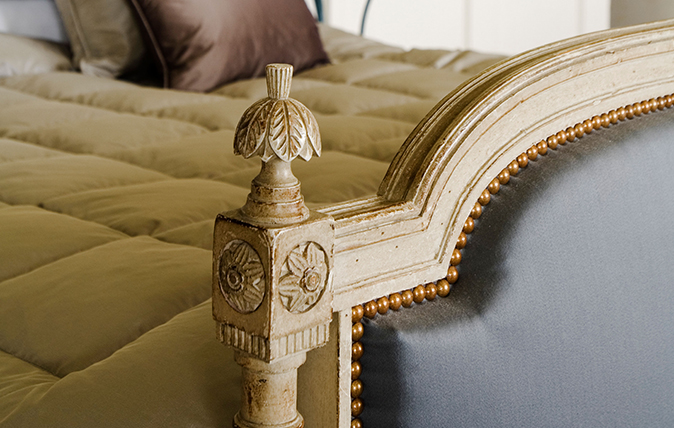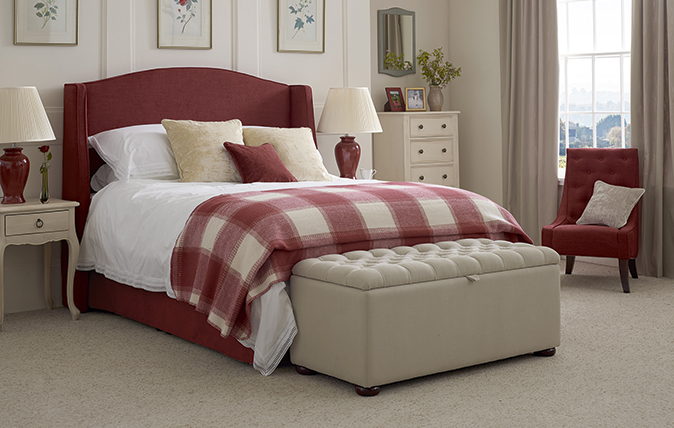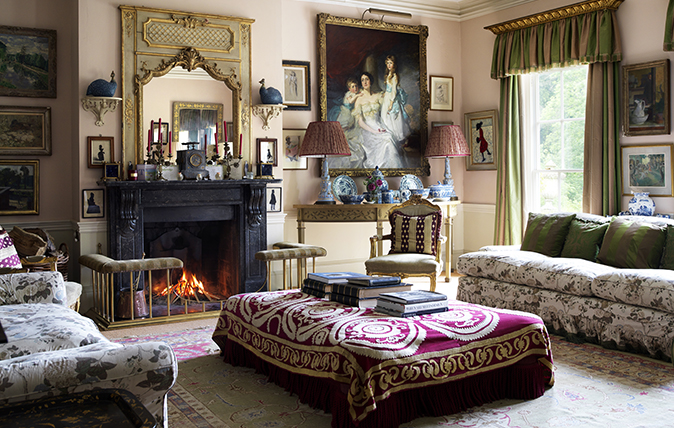The unbeatable cosiness of the Eiderdown – stylish, warm and full of vintage charm
Although most of us now swear by sleeping under a Continental duvet, a duck-feather-filled eiderdown is the height of bedtime luxury, says Tessa Waugh.


When Sir Terence Conran introduced duvets – or Continental quilts, as they were known then – to the shelves of Habitat in 1964, he instigated a revolution in the bedroom. An advertising slogan of the time entreated customers to ‘sleep with a Swede’ and we didn’t need much persuading.
Duvets – named after the French word for down – were more comfortable and lighter than traditional blankets and, best of all, they saved time. Making a bed, previously a laborious process involving folding blankets and stretching and tucking in sheets, became a two-second exercise, involving a little sheet straightening, some pillow fluffing and a quick shake of the duvet. Job done.
We waved goodbye to blankets and hospital corners without a backward look, but were far less enthusiastic about giving up eiderdowns. No amount of low-maintenance Nordic living (or sexy Swedes) could seduce us into jettisoning the decorative, feather-filled quilts upon which both modern and historic ideas of luxury are in accord.

Eiderdowns, or eiderdown quilts, first appeared on our beds in Victorian times as an alternative to heavy and scratchy blankets. In those days, several layers were used on beds, beginning with a top sheet, then blankets, an eiderdown and, sometimes, a bedspread on top.
Encased in sumptuous, quilted satin or pretty floral chintz and filled with duckdown (originally from the female eider duck, hence the name) or goosedown, eiderdowns were the crowning glory of the bed.
Much like the duvet, they were prized for their lightweight yet warmth-giving properties, which made them ideal for draughty Victorian bedrooms.
Now that we’ve all been spoilt by central heating, we don’t need as many layers on our beds, but eiderdowns can still be a desirable and stylish addition to a bedroom, especially when they’re handmade in Britain in an opulent array of fabrics. There is no doubt that eiderdowns ‘prettify’ a bedroom and are essential if you’re going for a charming, vintage look.
Exquisite houses, the beauty of Nature, and how to get the most from your life, straight to your inbox.
Sadly, they’ve fallen out of favour with many smart London hotels – The Savoy, The Lanesborough, The Goring and The Dorchester no longer use eiderdowns, however, The Ritz will arrange one if a guest requests it.
So who’s buying them? ‘We sell them to all sorts of people,’ explains fabric designer Sarah Hardaker, who sells eiderdowns through her interiors business along with fabrics and wall coverings ().
‘We sold one last week for an 18th-birthday present and we also sell lots of eiderdowns to more mature people who want “proper bedding”.’
In addition Mrs Hardaker furnishes a number of boutique hotels ‘that want a splash of colour on the bed’ with eiderdowns. Having started her business in 2006, when a vintage eiderdown inspired her first design, she believes their appeal is multi-faceted: ‘They are classic, timeless and have an heirloom quality that never really goes out of fashion.’
When asked if owning an eiderdown means forsaking your duvet in favour of blankets and a sheet, Mrs Hardaker is reassuring: ‘Traditionally, they would have been used on a bed with sheets and blankets and the eiderdown would sit on the top. However, in my house, we sit them on top of a white duvet.’

Fabric designer Kimberley Bell sells eiderdowns handmade with goosedown feathers in Cornwall through her company Peony and Sage. She agrees they are less of a practical necessity these days.
‘Most people use them to dress a bed rather than for their functionality – they place them over a duvet or use them as a footer. People love the pretty patterns, their sense of nostalgia and their timeless beauty. They add glamour and romance toa bedroom,’ she explains.
There is also a good market in second-hand eiderdowns – eBay is full of them – but Mrs Bell prefers new with a vintage-style fabric. ‘However, for double bedrooms, it can be very hard to find two vintage examples to match and the old ones can be ripped, stained or faded,’ she advises.
Belinda Davies began making eiderdowns for family and friends before starting her eponymous business nine years ago. She fills them with the best-quality duck feathers and down and prices range from £175 for a single (made with your own fabric), up to £520 fora super-king-size buttoned-silk eiderdown.
As with anything that’s handmade, they aren’t cheap, but, when treated well, these eiderdowns are made to last several lifetimes – unlike sexy Swedes.

How to create the perfect bedroom: 7 things you have to know, by Henriette von Stockhausen
Interior designer Henriette von Stockhausen shares her thoughts on how to create the perfect bedroom.

Top 10 design dilemmas – solved
An interior design project presents a maze of head-scratching conundrums, from choices between plain and patterned fabrics to whether you

Create your own rural oasis: Five bedroom furniture tips
You don't have to live in the country to have countryside touches in your house, and the bedroom is a
Country Life is unlike any other magazine: the only glossy weekly on the newsstand and the only magazine that has been guest-edited by His Majesty The King not once, but twice. It is a celebration of modern rural life and all its diverse joys and pleasures — that was first published in Queen Victoria's Diamond Jubilee year. Our eclectic mixture of witty and informative content — from the most up-to-date property news and commentary and a coveted glimpse inside some of the UK's best houses and gardens, to gardening, the arts and interior design, written by experts in their field — still cannot be found in print or online, anywhere else.
